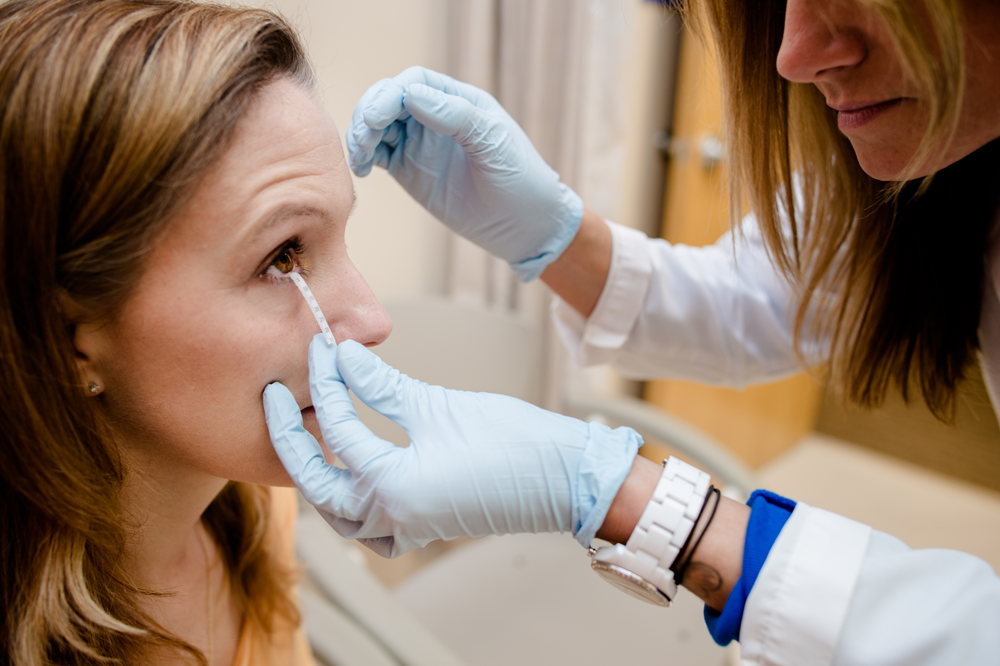What Tears Can Tell Us About Our Nutritional Health

Complete the form below to unlock access to ALL audio articles.
Having adequate levels of nutrients in our bodies is essential for proper growth, maintenance and functioning of cells and tissues. The monitoring of our nutritional health can therefore play an important role in preventing deficiencies and subsequent diseases.
Recent research from scientists at Michigan Technological University has demonstrated the potential tears can offer as an indicator of nutritional health. We spoke to Adrienne R. Minerick, Associate Dean for Research & Innovation, College of Engineering, to learn more about the research and its wider implications.
AM: What are some of the current limitations of nutritional testing?
ARM: The largest issue is that most vitamins (there are 13 essential) require a separate blood test which makes efficient screening cumbersome, laborious, and costly. It’s protocol for each separate test to have sufficient sample available to repeat the test if necessary, so larger volumes of sample are required. The next challenge is that a majority of blood testing is now outsourced to independent medical labs so the time delay between taking the sample and obtaining the results can be days. In rural locations with sub-optimal infrastructure, this can be longer. Once results are known, it traditionally requires nurse or physician follow up. This process is inefficient.
As a result, medical practice doesn’t regularly rely upon quantitatively measuring vitamin levels, it instead relies upon recognizing symptoms. Symptoms are usually signs of damaged tissues (simple as nail discoloration, as complicated as nerve function). For the tissues to show signs of damage, the vitamin deficiency had to persist for long stretches of time. Analytical tests that can screen levels in a simple, inexpensive manner means that it will be possible to identify infants and children at risk for developmental damage prior to any permanent tissue damage.
AM: Can you tell us more about your recent vitamin study?
ARM: With seed funding from the Gerber Foundation, we asked two scientific questions.
1. Are vitamins present in tears and could we reliably detect them?
2. Do the vitamin levels in tears correlate with the vitamin levels in blood?
This research, conducted by recent PhD graduate Maryam Khaksari, illustrated that vitamins are present in tears. The majority of the essential vitamins are water soluble, which were present in tears in higher concentration than fat soluble vitamins. Given that tears are 98% water, this result wasn’t surprising. This study developed up protocols to reliably detect both water and fat soluble vitamins. The limits of detection and limits of quantification did vary by vitamin, so there is ample room to improve this technique.
The second question was answered by a small clinical trial with UP Health: Portage Hospital’s Pediatric Clinic. During the 4-month well-baby check-up, willing parents and their infant each donated both a blood sample and a tear sample. Vitamin concentrations were determined in the samples and correlations quantified. Fat soluble vitamin K showed the strongest concentration correlation between blood and tears. The strength of additional vitamin correlations were noted. These early-stage results demonstrate that vitamin screening from a single drop of tears (35uL or microliters) is feasible – with additional refinement.

Credit: Sarah Bird
AM: What challenges did you face when measuring vitamin levels in tears?
ARM: Concentrations in tears are quite low. This makes quantitative detection challenging. It is very reproducible for some vitamins and less reproducible for others.
AM: Can you tell us more about the microfluidic device you are developing, and how this could help improve global nutritional health?
ARM: The true value and ingenuity of engineering microfluidic devices lies in simple. Simple to use by the nurse/doctor, simple to read the result, and as a consequence simpler direct technologies to translate the vitamin concentration to the output signal. Our research group specializes in microfluidics and electrokinetics (using electric fields to discern molecular differences). These technologies enable quantitative results using small volumes. We aren’t there yet, but our progress thus far to simultaneously detect vitamins at physiological concentrations is a great start.
Further information about the study can be found here
Adrienne R. Minerick was speaking to Anna MacDonald, Editor for Technology Networks.


